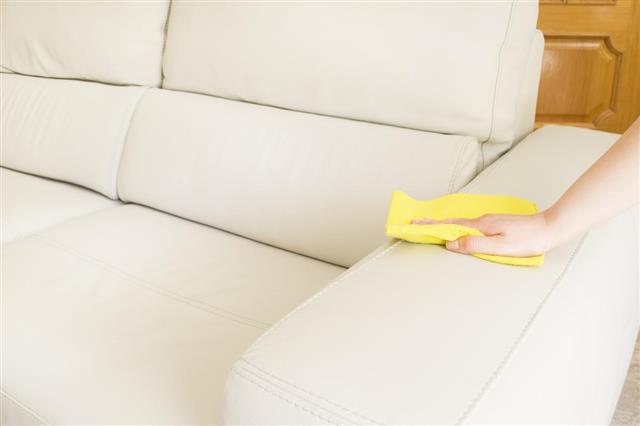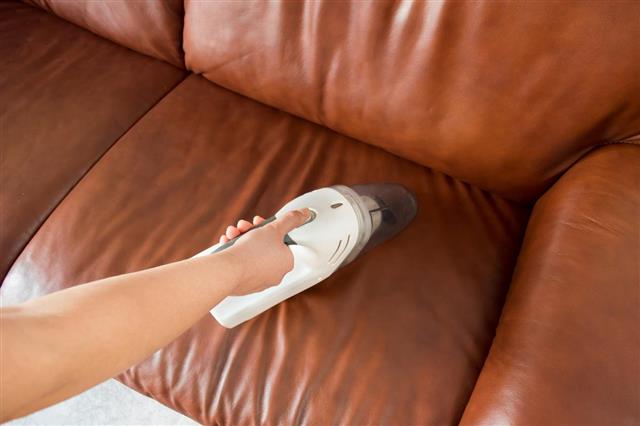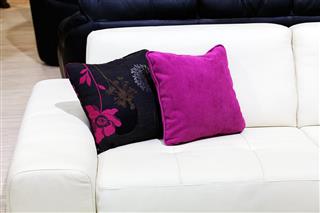
Even the shiny, lustrous leather couches can become dull and dirty. As their utilization rate increases, they get dabbled by all sorts of liquids, causing various adhering stains.
While purchasing a lovely, shiny leather couch from the showroom, nobody expects these gorgeous-looking beauties to be a challenge to maintain. Leather couches make ultimate living room furniture, however, call for regular cleaning and appropriate maintenance. Leather is a special kind of material and cleaning a leather couch involves the use of certain techniques. Let’s take a look at how it’s done.
Vacuuming: It is best to vacuum the couch crevices in order to get rid of dust, dirt, and crumbs. Application of cleaning agents to a dirty couch causes the dirt particles to adhere to it and even get rubbed in, making things worse. Thus, one should always start the cleaning process by first vacuuming away all the loose dirt and dust.
Soap and Water: Moisturizing soaps or body wash (Dove) along with little water serves well in the overall cleaning method. By gently rubbing the diluted soap solution onto the couch using a soft cloth, one can take care of the grime adhering to it. After gently rubbing the soap, one should use a dry, clean cloth to wipe it dry. Do not use water to rinse off the soap, as too much water can damage the leather.
Leather Conditioning: The cleaning step can be followed by application of a deep leather conditioning formula (found easily in the store) to work on the leather. For the best results, one should rub the conditioner in circular motion, covering the entire couch area. Let it settle for the next 10-15 minutes, and then gently rub it with a soft, dry cloth for a lustrous look. One should apply this leather conditioner about 2-3 times a year for them to look bright and new.
Baking Soda: To brighten dirty leather couches, one should resort to baking soda treatment. Make one cup of salt water, by adding ¼ cup sea salt into ¾ cup of tap water. To this salt water, add 2 tbsp. baking soda and 1 tsp. of flour. Mix well, and wipe it down the couches using a wet cloth. Then, use a dry cloth to wipe off the mixture. The leather couch will regain its lost shine!
Cleaning Grease Stains: Grease stains should not be cleaned with water. One should dab the spill till the rag comes back dry. Once the dabbing has been done, one should allow the stain to settle for about two days. What happens is the oil from the stain settles down, leaving little or no mark on the leather couch surface. If the stain is still visible, one should use a leather soft cleaner to remove the stain.
Cleaning Ink Stains: To remove ink stains from the couch, dip a cotton bud in some vinegar (some alcohol will also do), and rub it on the stained spot. After this, dry the spot with a blow dryer. If the stain persists, rub some acetone-free nail polish remover onto the stain using a soft cloth. However, one should avoid cleaning a leather couch with a nail polish remover during routine maintenance, because it results in discoloration.
In case of spillage, one should dab as much as one can using a cloth. Rubbing can cause spread of spillage to other areas, which is why it is necessary to keep dabbing till the cloth comes back dry. Using cleaning agents on leather couches is always a risk. One can never be sure which product will cause discoloration. This is why it is advisable to first experiment the cleaning agent on one small test region (the rear end) of the couch. Better safe than sorry!











